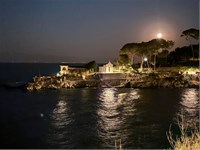Perseids – Tears of St. Lawrence: A Night Sky Spectacle
The peak is expected around the feast of St. Lawrence (August 10), but this year, the most intense activity will occur during the night between August 12 and 13.

Every year, roughly between July 17 and August 24, the skies above Croatia light up with a phenomenon known as the Tears of St. Lawrence – an intense meteor shower caused by Earth passing through the debris trail of Comet Swift-Tuttle.
The peak is expected around the feast of St. Lawrence (August 10), but this year, the most intense activity will occur during the night between August 12 and 13.
Why at this time of year?
- Comet Swift-Tuttle orbits the Sun every 133 years – last "felt" in 1992
- The meteor trails originate from the Perseus constellation, hence the name Perseids
- "Tears of St. Lawrence" refers to the coincidence with his feast day (August 10)
- Under ideal conditions, you can see up to 90 meteors per hour
Where to watch on the island of Lošinj?
If you're staying on Lošinj and want to observe the Perseids away from light pollution, these locations are excellent:
- Lanena Cove – peaceful and secluded, perfect for night sky watching
- St. Mikula – clear skies and a wide view of the horizon
- Ridimutak Beach – just outside the main tourist flow, great for meteor spotting
- Golden Cove (Zlatna uvala) – known for its silence and dark surroundings
- Rovenska Pier – expansive view of the sky over the sea
- Out at sea near Veli Lošinj (Na sred Vale) – best accessed by boat to avoid harbor lights
Meteor Viewing Tips
- Pick a dark location, away from streetlights – minimizing light pollution is key
- Bring a blanket or reclining chair and allow your eyes 10–15 minutes to adjust to the dark
- The best time to watch is between midnight and early morning, if skies are clear
- Dress in layers – even summer nights can be chilly
- See a "shooting star"? Make a wish – tradition says it's a magical moment!














